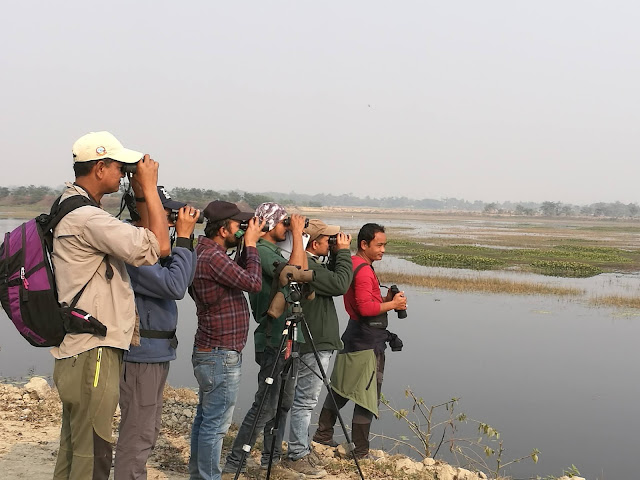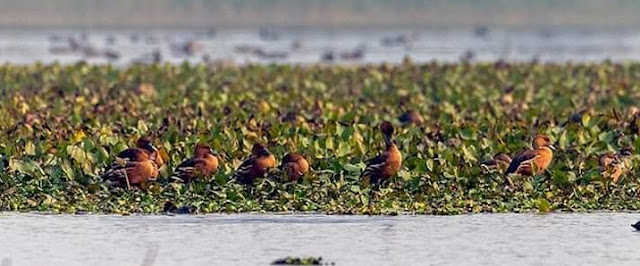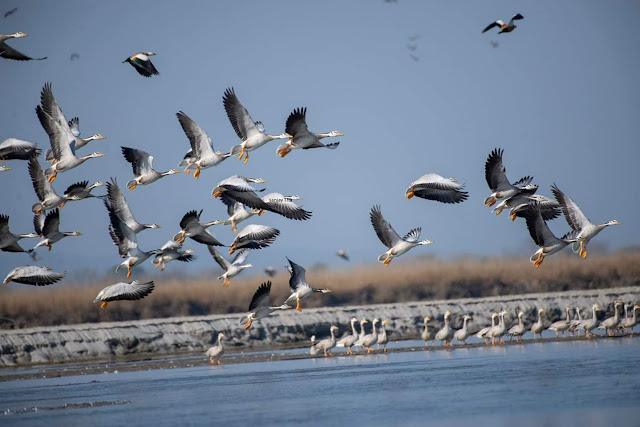The wet land waterbird count was started in January 1967 throughout Europe and in adjacent regions. Now in its 52rd year, the International Waterbird Census has become a vital source of information for the conservation and management of wetlands and waterbirds around the world. This international waterbird census is coordinated by Wetlands International. The waterbird census is an important tool to estimate population size and trends of birds and to identify important wintering sites. This is the story of one of the world’s most important and valuable monitoring programmes. The waterbird count in Nepal started in 1987 and for 2019 it will be running on its 32rd year! We have conducted the counting for Eastern part of Nepal. The result of the mid-winter water bird count has been published for Koshi Tappu and its adjacent wetland areas. The water bird count is an annual event that is celebrated across the globe from 5th-20th January.
The event was organized around the Koshi area from 5th-11th January, 2019. This event was supported by more than 30 volunteers from Koshi Bird Society, Koshi Tappu Wildlife Reserve, Himalayan Nature, Nepalese Ornithological Union, and Koshi Camp.
This edition of mid-winter water bird count was conducted in Mangalbare and Betana wetland area of Morang, Koshi Tappu Wildlife Reserve, Chatara, Tarahara and Barjutaal of Sunsari, Koshi Barrage, Bharhdaha wetland area and Kamalpur Lake of Saptari, and Bhagalpur wetland area of Udaypur. This year’s count recorded high number of birds.
Number Of Waterbird Count in East Nepal
This year’s count recorded a total of 21,774 water birds representing 58 species. More than half of the total number was recorded from Barju Lake alone.
A total of 6,959 water birds representing 52 species were recorded from KWTR among which Ruddy Shelduck was the most abundant, numbering 2,321 individuals. Similarly, a total of 2,330 water birds were recorded from areas around KWTR and Koshi Barrage. Ruddy Shelduck was recorded more frequently (474 individuals) than others.
During the count, 12 and 14 nests of Lesser Adjutant waere recorded from Sunsari’s Tarhara and Morang’s Mangalbare respectively.
Fulvous Whistling Duck seen after 31 years
A flock of 16 Fulvous Whistling Duck were seen after 31 years from Barjutal in Sunsari, making this recording the largest sighting in Nepal. This species is a native of North-east India and Bangladesh, while a migratory species for Nepal. It was first recorded on 12th February 1979 from Koshi Barrage and subsequently on March 16th 1987 for second time. Both sightings recorded a single individual.
Large flock of Bar-Headed Goose in Nepal
During the count, a large flock of Bar-Headed Goose numbering in at 1200 individuals was spotted from KTWR. These birds migrate to the Terai from central Asia (most probably Tibet, Mongolia and Russia), flying over the Himalayas, making their migration one of the most arduous in animal kingdom.




